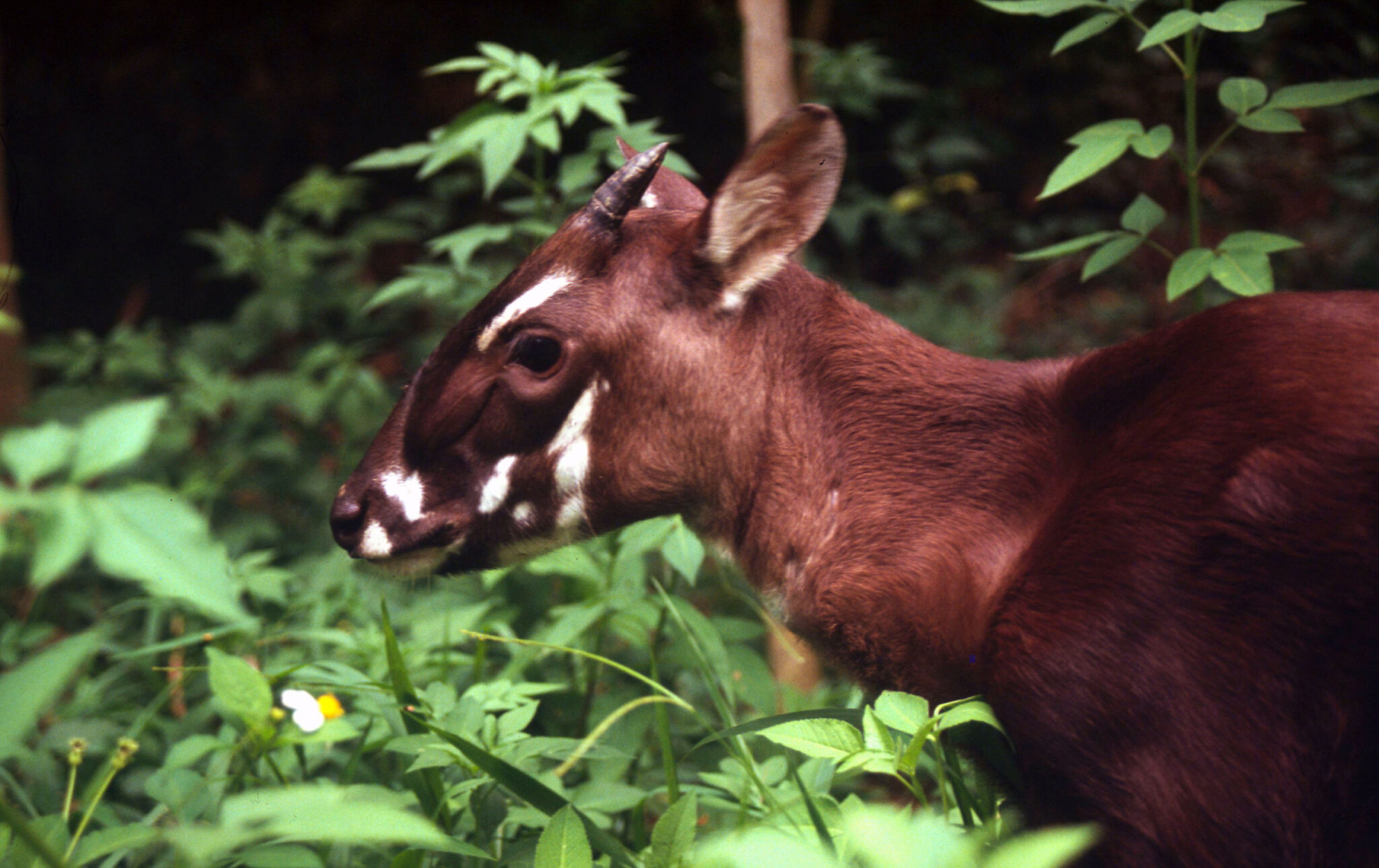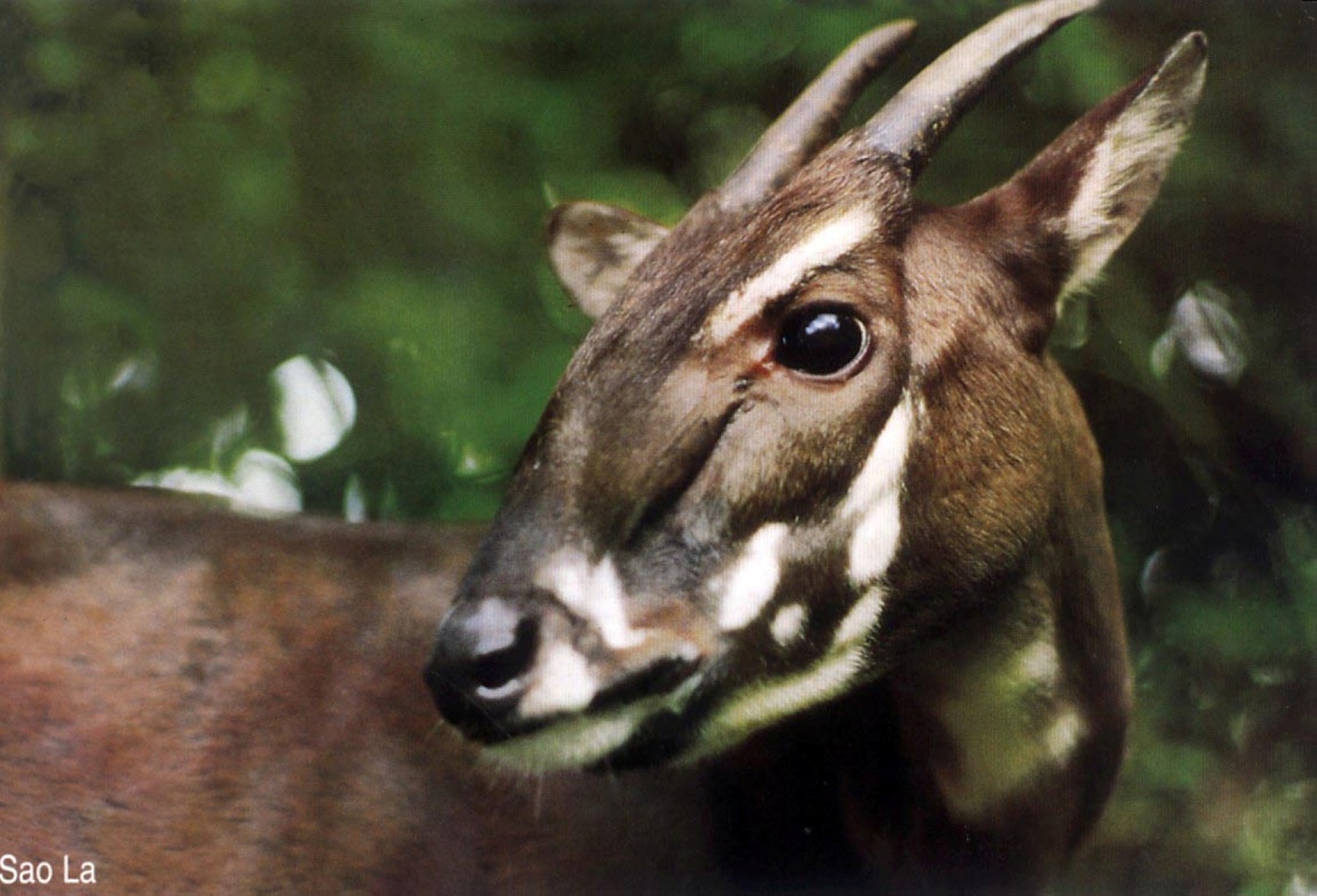Description
Saola (Pseudoryx nghetinhensis) is an ungulate animal belonging to the family of strays, and despite its large size (weighs about 90 kg) it was not scientifically described until 1995. It lives in a tropical forest, in a very inaccessible region of Vietnam bordering Laos. So far, researchers have managed to photograph it only three times!
Few have heard of the strange animal that is seen only a few times, the saola. Saola (Pseudoryx nghetinhensis), one of the most endangered large mammals on earth, is probably the prototype of the mythical unicorn. It is an ungulate animal belonging to the Bovidae family and despite its relatively large size (weighs approx. 90 kg), it was discovered only in 1992 and scientifically described in 1995. It is endemic, inhabiting very inaccessible areas in the Annamite Mountains of Vietnam and Laos. It is called by the natives saht-supahp, or kindly animal. The main threat to saola is poaching. In Vietnam, this species has been almost completely exterminated – the last authentic photo of saola is from 2015. What’s more, so far only its traces have been found a few times and researchers have managed to photograph it only three times! The number of surviving individuals is estimated to be less than 50.

The Foundation supports financially the saola protection program run by the Saola Working Group, in particular the project to build a facility for ex situ breeding of saola in Vietnam.
Saola Working Group was founded in 2006 by the International Union for Conservation of Nature and brings together scientists who conduct research on saola and implement a plan to save this species. Its aim is to coordinate actions to save the saola. The group focuses on finding individuals living in the wild, getting to know their biology in detail and starting breeding, which turns out to be the last chance for saola. “For many years we have worked with NGOs and the Vietnamese and Laos governments to protect forests and nature in the Annamites, but despite efforts, unfortunately in both Vietnam and Laos, the level of poaching has not decreased enough to allow Saola to survive,” said William Robichaud, the coordinator of Saola Working Group.
Saola is facing imminent destruction. To deal with this dire situation, the Saola Working Group is working with the governments of Vietnam and Laos to implement a bold new initiative to save species: the establishment of a breeding program. “Obtaining the last few saola and placing them in a protected facility under supervision, hiring international experts is the most important step in saving this unusual species from extinction,” says Robichaud.
Specialists carry out activities in nature, including trial capturing of animals, installation of camera traps, training of local employees who will take care of the protection of the saola. There are also talks with local poachers to determine the likely location of the saola. An important part of the activities is also the removal of snares. Within a month, more than 20,000 snares were removed from one Quang Nam reserve. In Poland, Radosław Ratajszczak, President of the Wrocław Zoo, member of the Saola Working Group certainly knows the most about saola. For many years he has been participating in expeditions and scientific research in Vietnam and Laos.
For more information about the group, see here:
http://www.savethesaola.org/

